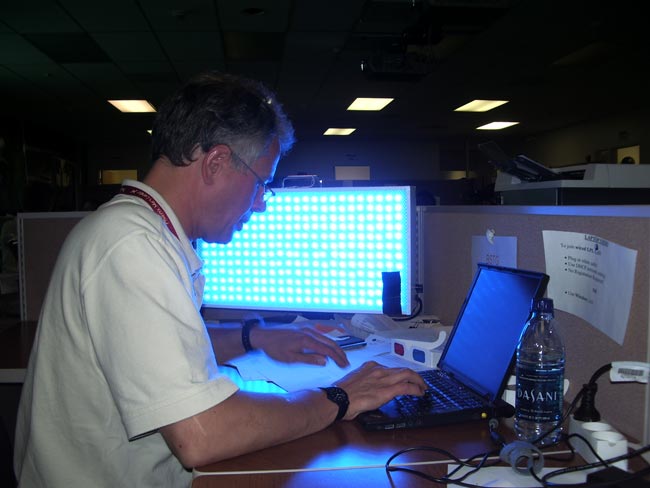The subject of Mars is a popular one. Not only in science fiction but, of course, in real life, too.
Curiosity’s presence on the red planet at the moment - you can look at interactive panoramas of Mars! - has been generating a great deal of international media interest, and there has been talk of trying to get real actual human beans out there by the 2030s, if not before.
[youtube]http://www.youtube.com/watch?v=Esj5juUzhpU[/youtube]
There are, of course, a number of challenges, many of which relate to the fragile state of our brains, bodies and minds.
We’ve had projects such as KiwiMars simulate life (and science!) in a ‘Martian’ evironment. The MARS-500 project shut people in a mocked-up spacecraft for 520 days to see whether all those movies about space crews cracking would actually happen*. Examples, basically, abound of people thinking Very Seriously about a human presence on Mars.
Another issue, though, apart from the food and stress and travel (WAY worse than airplanes and LAX) and everything else, is sleep.
Or, more precisely, our circadian rhythms - the biological ‘clock’ upon which our bodies run. Earth’s day is on the order of 24 hours long, and we’ve adapted to that. Well, mostly - our innate clock is about 24 hours 12 minutes. And it’s the progression on earth from day into night, and back again, which helps us keep our clocks in check. If you’re wondering ‘well, why would we care about that?’, they’re intimately involved in a number of very important processes, including metabolism, sleep** and mood…
However, the length of a day on Mars is slightly longer - 12 hours 39 minutes. Not a huge difference, sure, but apparently our bodies have great difficulty adjusting to this difference on a day to day basis.
But retraining our body clocks isn’t impossible. And, indeed, the fix is remarkably low tech - it’s a combination of blue light and caffeine.
A paper recently published in the journal SLEEP details how 19 of the crew of the gruelling Phoenix Mars Lander mission in 2008 took part in a study looking at ways to help circadian rhythms readjust. In addition to the training all of the crew received, about how to use caffeine properly, how to properly arrange a dark, comfy bedroom, and how to be OK with not being superhuman, 19 crew members volunteered for a little bit more.
These crew members wore an ‘actigraph’ watch, which helped to monitor their sleep patters, and kept a work and sleep diary. In exchange, they were given panels of blue LEDs at their workstations. This short-wavelength light, it would seem, mad a difference, with 87% of the 19 synchronizing to the Martian clock.

Pretty cool, and a wonderful example of how, with a bit of thought and cleverness, a very simple and cheap solution can have a marked effect :)
Of course, all I can think of is ‘Hooray! One step closer to the 25 hour day!’…
Reference
Barger LK, Sullivan JP, Vincent AS, Fiedler ER, McKenna LM, Flynn-Evans EE, Gilliland K, Sipes WE, Smith PH, Brainard GC, & Lockley SW (2012). Learning to Live on a Mars Day: Fatigue Countermeasures during the Phoenix Mars Lander Mission. Sleep, 35 (10), 1423-35 PMID: 23024441
* I’m paraphrasing significantly. More accurately, it was a ‘psychosocial experiment’, involving only men, which looked at a range of different situations. It was actually really, really cool :)
** Apparently, blind people also often suffer from sleep disorders because they don’t perceive the light/dark difference of day/night. And their body clocks adjust to something closer to the Martian day!